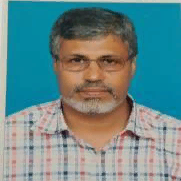International Journal of Modern Education and Computer Science (IJMECS)
IJMECS Vol. 16, No. 3, 8 Jun. 2024
Cover page and Table of Contents: PDF (size: 1783KB)
Malayalam Question Answering System Based on a Deep Learning Hybrid Model of CNN and Bi-LSTM Approach
PDF (1783KB), PP.39-55
Views: 0 Downloads: 0
Author(s)
Index Terms
Deep learning, Long Short-Term Memory Networks, Natural Language Processing, Malayalam, Question Answering System, Bi-directional long short-term memory (Bi-LSTM), convolutional neural network (CNN)
Abstract
The Question-Answering (QA) approach represents one of the most significant Natural Language Processing (NLP) tasks that depends on language input. In terms of morphology & adhesive structure, Malayalam is a resource-constrained indigenous language of India. These linguistic features make QA in Malayalam particularly difficult. This study uses a subset of 5 tasks from the Facebook bAbI dataset to present a subset of five assignments from the Facebook bAbI dataset; this study presents a Malayalam Question Answering Solution that utilizes a Deep Learning (DL) hybrid framework combining CNN and Bi-LSTM Methods. We believe this is the initial time a hybrid-based deep learning framework has been used for the Malayalam question-answering technology. In the first iteration of the method, high-level semantic characteristics are extracted utilizing a Convolutional Neural Network. The Bi-LSTM tier then extracts the contextual feature representation of the text using the feature extraction result. Finally, use the softmax activation function to predict correct answers for corresponding questions. The proposed model is both functional and systemized in terms of classification accuracy, precision, recall, and F1 scores. The simulation results show that the proposed hybrid CNN and Bi-LSTM model outperform the existing models in terms of classification with more than 91 % accuracy for all five tasks.
Cite This Paper
Bibin P A, Babu Anto P, "Malayalam Question Answering System Based on a Deep Learning Hybrid Model of CNN and Bi-LSTM Approach", International Journal of Modern Education and Computer Science(IJMECS), Vol.16, No.3, pp. 39-55, 2024. DOI:10.5815/ijmecs.2024.03.04
Reference
[1]Sharma, S., & Tiwari, M. A. “Framework for Restricted Domain Question Answering System using advanced NLP tools and software.” International Journal for Rapid Research in Engineering Technology & Applied Science, 4(5), pp. 2455-4723, May 2018.
[2]Dhandapani, A., & Vadivel, V. “Question answering system over semantic web.” IEEE Access, 9, pp. 46900-46910, 2021.
[3]Soares, M. A. C., & Parreiras, F. S. “A literature review on question-answering techniques, paradigms and systems.” Journal of King Saud University-Computer and Information Sciences, 32(6), pp. 635-646, 2020.
[4]Mutabazi, E., Ni, J., Tang, G., & Cao, W. “A review on medical textual question answering systems based on deep learning approaches.” Applied Sciences, 11(12), pp. 5456, 2021.
[5]Sultana, T., & Badugu, S. “A review on different question-answering system approaches.” In Advances in Decision Sciences, Image Processing, Security and Computer Vision: International Conference on Emerging Trends in Engineering (ICETE), Springer International Publishing, 2, pp. 579-586, 2020.
[6]Aithal, S. G., Rao, A. B., & Singh, S. “Automatic question-answer pairs generation and question similarity mechanism in question-answering system.” Applied Intelligence, pp. 1-14, 2021.
[7]Sreeja, P. S., & Pillai, A. S. “Towards an efficient Malayalam named entity recognizer analysis on the challenges.” Procedia Computer Science, 171, pp. 2541-2546, 2020.
[8]Rojan, A., Alias, E., Rajan, G. M., Mathew, J., & Sudarsan, D. “Natural Language Processing based Text Imputation for Malayalam Corpora.” In 2020 International Conference on Electronics and Sustainable Communication Systems (ICESC) IEEE, pp. 161-165, 2020, July.
[9]Badugu, S., & Manivannan, R. “A study on different closed domain question answering approaches.” International Journal of Speech Technology, 23(2), pp. 315-325, 2020.
[10]Ajees, A. P., & Idicula, S. M. “A named entity recognition system for Malayalam using conditional random fields.” In 2018 International Conference on Data Science and Engineering (ICDSE) IEEE, pp. 1-5, 2018, August.
[11]Rajimol, R., & Anoop, V. S. “A framework for named entity recognition for Malayalam—A Comparison of different deep learning architectures.” Natural Language Processing Research, 1(1-2), pp. 14-22, 2020.
[12]Jha, B. K., Akana, C. M. V. S., & Anand, R. “Question Answering System with Indic multilingual-BERT.” In 2021 5th International Conference on Computing Methodologies and Communication (ICCMC) IEEE, pp. 1631-1638, 2021, April.
[13]Mishra, A. K., & Saxena, A. “Survey on Question and Answering Retrieval System using Hadoop.” 2019.
[14]Murali, S., & Swapna, T. R. “An Empirical Evaluation of Temporal Convolutional Network for Offensive Text Classification [J].” International Journal of Innovative Technology and Exploring Engineering (IJITEE), 8(8), 2019.
[15]Zhang, Y., Lu, W., Ou, W., Zhang, G., Zhang, X., Cheng, J., & Zhang, W. “Chinese medical question answer selection via hybrid models based on CNN and GRU.” Multimedia tools and applications, 79, pp. 14751-14776, 2020.
[16]Kumari Sheeja, S., & Devi, S. L. “Automatic Identification of Explicit Connectives in Malayalam,” In LREC 2022 Workshop Language Resources and Evaluation Conference 20-25 June 2022, 74, 2022, June.
[17]Kumar, G. K., Gehlot, A. S., Mullappilly, S. S., & Nandakumar, K. “Mucot: Multi-lingual contrastive training for question-answering in low-resource languages.” 2022. arXiv preprint arXiv:2204.05814.
[18]Anhar, R., Adji, T. B., & Setiawan, N. A. “Question classification on question-answer system using bidirectional-LSTM.” In 2019 5th International Conference on Science and Technology (ICST) IEEE, 1, pp. 1-5, 2019, July.
[19]Prasanth, S. N., Raj, R. A., Adhithan, P., Premjith, B., & Kp, S. “CEN-Tamil@ DravidianLangTech-ACL2022: Abusive Comment Detection in Tamil using TF-IDF and Random Kitchen Sink Algorithm.” In Proceedings of the Second Workshop on Speech and Language Technologies for Dravidian Languages, pp. 70-74, 2022, May.
[20]Catling, F. J., & Wolff, A. H. “Temporal convolutional networks allow early prediction of events in critical care.” Journal of the American Medical Informatics Association, 27(3), pp. 355-365, 2020.
[21]Renjit, S., & Sumam, M. I. “Feature-based Entailment Recognition for Malayalam Language Texts.” International Journal of Advanced Computer Science and Applications, 13(2), 2022.
[22]Rahmath K, R., Reghu Raj, P. C., & PC, R. “Malayalam Question Answering System Using Deep Learning Approaches.” IETE Journal of Research, pp. 1-13, 2022.
[23]Pa, B., & Babu, A. P. “Malayalam questions classification in question answering systems using support vector machine.” International Journal of Computer Sciences And Engineering, 7(1), pp. 724-729, 2019.
[24]Das, A., & Saha, D. “Deep learning-based Bengali question-answering system using semantic textual similarity.” Multimedia Tools and Applications, pp. 1-25, 2022.
[25]Zhou, G., Xie, Z., Yu, Z., & Huang, J. X. “DFM: A parameter-shared deep fused model for knowledge base question answering.” Information Sciences, 547, pp. 103-118, 2021.
[26]Graves, A., Jaitly, N., & Mohamed, A. R. “Hybrid speech recognition with deep bidirectional LSTM.” In 2013 IEEE workshop on automatic speech recognition and understanding IEEE, pp. 273-278, 2013, December.
[27]He, R., Lee, W. S., Ng, H. T., & Dahlmeier, D. “Exploiting document knowledge for aspect-level sentiment classification.” arXiv preprint arXiv:1806.04346, 2018.

